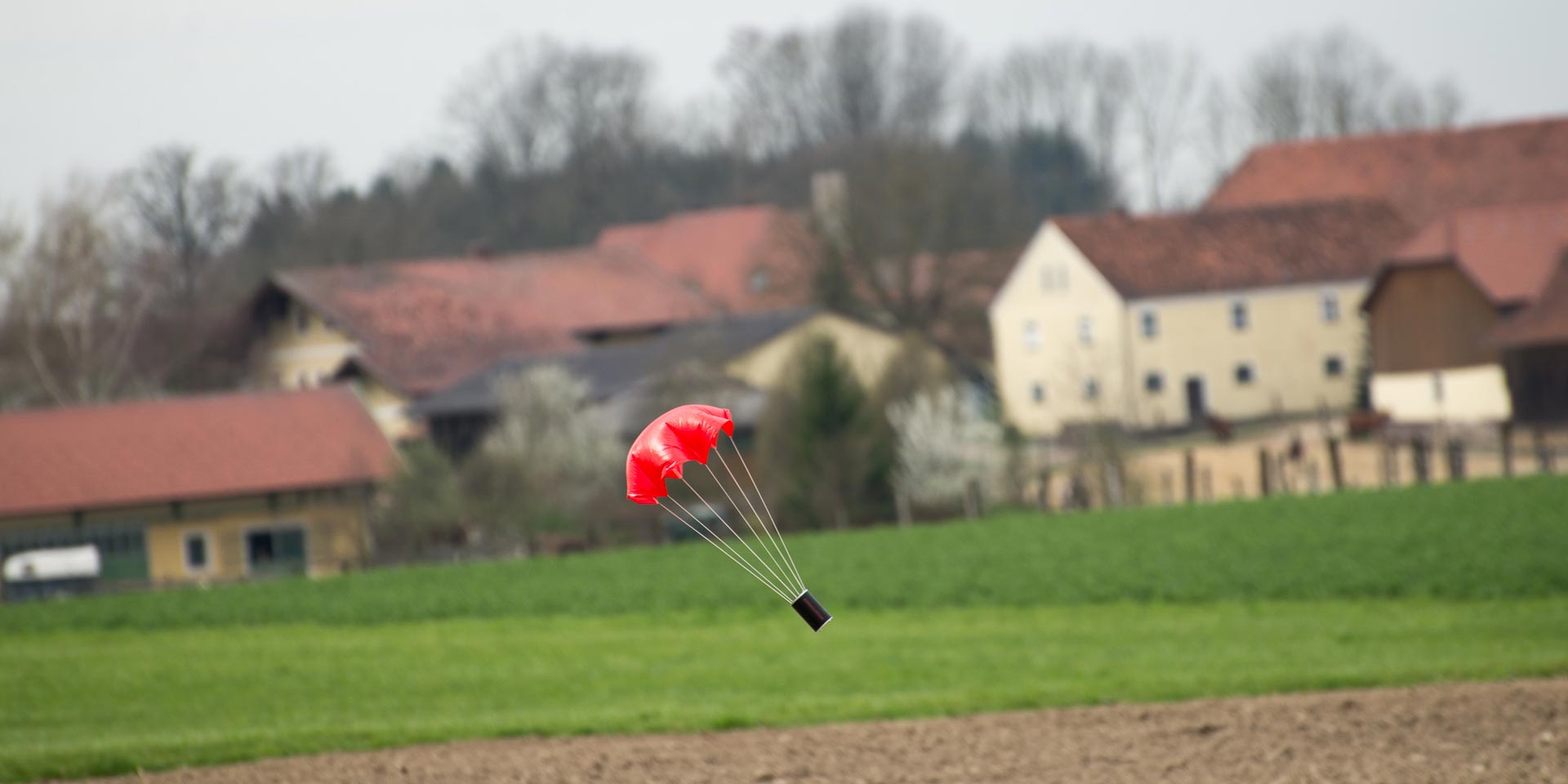The CanSat competition is aimed at students aged 14 and over. The task of the participating teams is to build a satellite the size of a beverage can, to be transported by a rocket to a height of several hundred metres and ejected. During the descent back to the ground, the CanSat must fulfil missions.
Primary mission: The mini-satellite is to measure temperature and barometric pressure and transmit the values to the ground station at least once per second. The actual ejection altitude and the rate of fall must be determined from the air pressure values recorded. In addition, a temperature profile must be created.
Secondary mission: The satellite is to perform a mission selected and developed by the participants themselves. There are no limits to the technical and scientific ingenuity deployed! The starting point can be a scientific question, a technical problem or a project idea of social relevance. Examples of a secondary mission could be the collection of telemetry data (acceleration, GPS location, etc.), a program for remote control of the CanSat so that it executes commands sent by the ground station during descent, or landing at a previously determined as accurately as possible. The motivation for the secondary mission must be explained in the application.
Participation in the CanSat competition provides students with the opportunity to go through all phases of a real space project; from mission selection, CanSat design, integration of technical components, technical test runs and the actual launch of the mini-satellite to scientific analysis of the acquired data. Furthermore, soft skills such as teamwork and interdisciplinary thinking are trained.
The winning team can look forward to participating in ESA’s international CanSat competition, where students can compete with the winners from other European countries.





